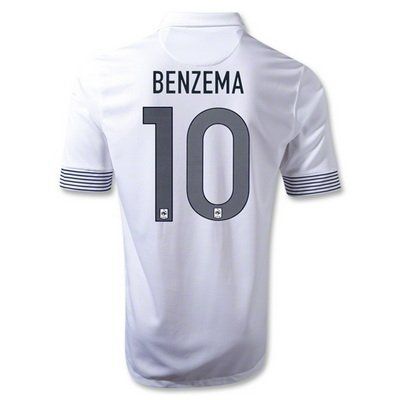
Think twice before you buy a Euro 2012 jersey


You walk past a Nike showroom. Your eye catches the bright orange jersey which is synonymous with the Netherlands, the cool blue of France, the smart maroon of Portugal and the simple red and white of Poland.
You walk into the shop, having made your mind up on which national team jersey will be added to your collection of replica football shirts. The price is steep, yes, but it’s totally worth it. The European Championships come along only once every four years and no two tournaments feature teams which sport the same jersey.
Right. Should you plan on buying a replica jersey to root for your favourite team in Poland-Ukraine, I would strongly advise you against it: you may have just invested in a death trap.
Roughly two weeks ago, the BEUC, Europe’s consumer watchdog, discovered that the replica football shirts for the Netherlands, Poland, France, Germany, Italy, Spain, Portugal, Ukraine and Russia contained worryingly high levels of toxic chemicals. The shirts were manufactured by sports giants Nike, Adidas and Puma.
The news came as further embarrassment for a tournament which has already been plagued by problems right from the start. In the build-up to Euro 2012, two separate bomb attacks were carried out by terrorists in the Ukrainian city of Dnipopetrovsk. The international community also expressed concern regarding the Ukrainian government’s political incarceration of former Premier Yulia Tymoshenko after a show trial.
The BEUC, an umbrella group representing Europe’s national consumer organisations, stated that the toxicity levels in Polish replica shirts were so high that they had to be taken off shop shelves immediately.
Significant concentrations of the highly toxic metal lead were found in German, Italian, French, Ukrainian, Spanish and Russian shirts. Concentrations of lead also exceeded the legal level in German and Spanish replica shirts that were meant for children, while the replica kits of the Netherlands and Portugal were found to contain nickel.
A BEUC statement said: “Host country Poland’s shirt should be banned outright from shops as it contains an organotin compound, used to prevent sweat odour, in higher doses than the legal limit. Organotin can be toxic to the nervous system.”
Nonylphenol, a chemical which is used in detergents, pesticides and emulsifiers, but banned in recycled and waste water because of its harmful effects on the environment was also found in Spain and Italy jerseys.
BEUC director-general Monique Goyens told the Telegraph: “Football fans pay up to €90 (£73, $114) for the shirt of their favourite team. The least they should expect is to have a quality and safe product.
“It is inexplicable that heavy metals are used in mass consumer products. It is clearly foul play by manufacturers to use substances harmful to both people and the environment.
“Our members’ test results are a sad reminder that Europe’s chemicals legislation is unfit for the purpose of banning dangerous substances from consumer products.”
The BEUC has since called for a review of all existing European legislation to tighten laws against potentially harmful “chemical cocktails” which could be toxic to consumers.
Ms Goyens said a plan to deal with “endocrine-disrupting chemicals” would be an opportunity for the EU to be on the offensive against harmful chemicals, as was seen in the Telegraph.
Tests to see whether the jerseys were safe for wear were carried out in Italy, Spain and Portugal. But one of the organisation’s representatives stated that the situation was being blown out of proportion. “There’s no need to dramatise. There’s nothing illegal, even though special attention is needed for vulnerable groups such as children,” said Jean-Philippe Ducart of Belgian watchdog Test Achat, to Fox Sports.
I for one am shocked. I thought this was Europe, where there were standards for everything. But now that this has occurred, I am absolutely convinced there has to be a change in legislation. As grim as this sounds, the EU may have the health of millions across Europe on its hands.
That’s not all. The source of these jerseys is the same, whether it’s being shipped to Asia, Africa, Europe, the Americas or Australia. Most of these jerseys are other made in China – isn’t everything? – or Far East nations such as Vietnam, Thailand and the Philippines, under appalling work conditions. Kit manufacturers there intentionally overlook safety standards as it means that they can cut costs, boosting their profit margins.
I’m sure Nike, Adidas and Puma are already aware of this, but whether they have addressed the problem remains is not yet known. Now that this has reached the public domain, consumers will not stand for receiving substandard products after shelling out quite a bit of money, since – as mentioned above – these shirts are expensive.
I, for one, will not be buying a replica shirt this summer.